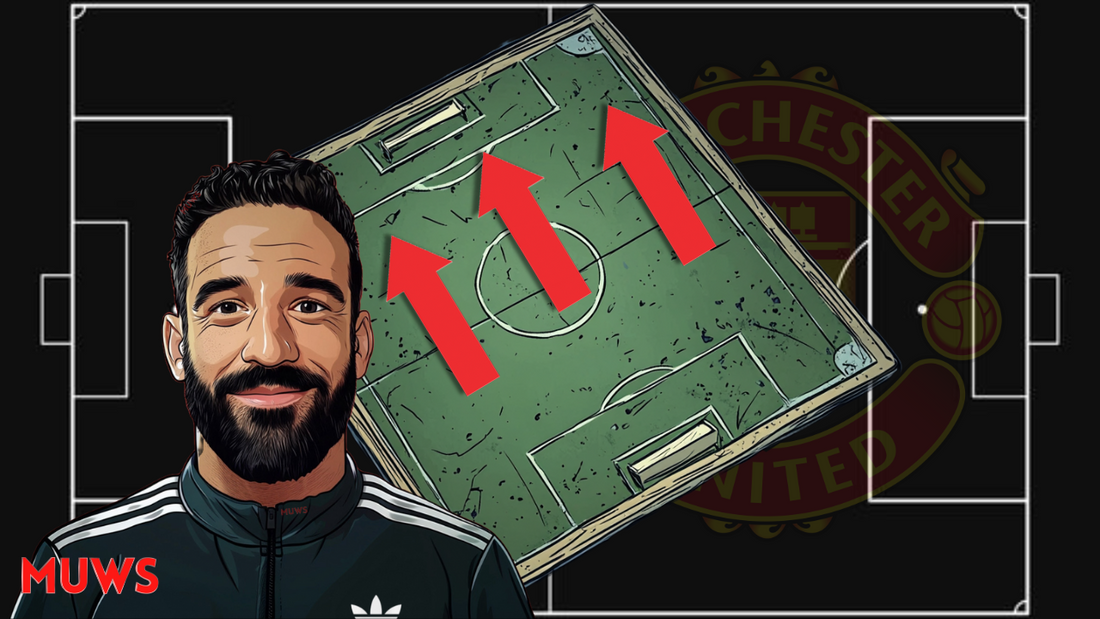
Is Manchester United’s Pressing Enough? Breaking Down Their PPDA
Share
Just how good is Manchester United’s press and is it working under manager Ruben Amorim?
To find the answers we have looked at the PPDA (Passes Allowed Per Defensive Action) Metric which is key for analysing a team's pressing effectiveness. This metric reveals how intensely and efficiently teams disrupt their opponent's build-up play. In other words it is used to measure the intensity of a team’s pressing. It calculates the number of passes an opponent is allowed to make in their defensive and middle thirds before a defensive action (like a tackle, interception, or foul) is attempted.
Lower PPDA = Higher pressing intensity. Teams apply more pressure to win the ball back quickly.
Higher PPDA = Lower pressing intensity. Teams are more passive, allowing opponents more time on the ball.
For the purposes of this article I have used the wonderful visuals from the superb X Account EBL - Analytics
Manchester United’s s PPDA

Man United’s average PPDA as of 27th Jan 2025 is 8.086, placing them in the mid-table for pressing intensity.
United press less aggressively than teams like Liverpool (5.691), Brighton (5.757), and Chelsea (6.24).
However, they press more than Newcastle (8.495), Fulham (10.079), and others with higher PPDA scores.
So what are the strengths and weaknesses in this analysis for United?
Strengths: A PPDA of 8.086 suggests United adopt a balanced approach, pressing in phases while maintaining defensive structure. We have seen how this is beneficial when playing against the league’s top teams who will regularly have the lion share of possession where overcommitting might expose United’s defence.
Weaknesses: Compared to top pressing teams like Liverpool and Brighton, United’s pressing is less intense. This might limit their ability to force turnovers high up the pitch and create chances from transitional play.
Overall, Manchester United’s PPDA indicates moderate pressing. Whether this is good or bad usually depends on the tactical approach and intent. If the goal is to dominate and win the ball high, they may need to increase their pressing intensity. However, if their strategy was to be defensively solid and potentially adopt a counter-attacking approach, their current PPDA would be considered reasonable. We will come back to this point and explore how this applies to Amorim’s team later.
Under Erik Ten Hag, Manchester United’s pressing intensity appeared to be quite low for the most part (finishing April of the 23/24 season on a PPDA of 10.676) but it’s important to understand the strategy behind ten Hag’s approach. The team’s high press wasn’t designed to disrupt the opposition’s build-up but rather to create turnovers in key areas, with the clear intent of converting those moments into scoring opportunities. This focus on generating effective turnovers is something United tried regularly under Ten Hag.

We know Rúben Amorim’s style of play is characterised by a focus on structured pressing, compact defensive organisation, and quick transitions. His teams, particularly at Sporting CP, emphasise an intelligent pressing system that targets key moments/triggers to win the ball back rather than pressing relentlessly. Manchester United’s PPDA of 8.086 aligns with Amorim’s pragmatic approach to pressing—applying pressure in a balanced manner rather than committing fully to high-intensity pressing.
If we were to be critical, one recurring issue we have seen this season is that when the two central midfielders push forward to apply pressure, the centre-backs either hesitate to step up or react too slowly. This creates a significant disconnect between the defensive line and the midfield, leaving a large open space that opponents can exploit. An all too familiar issue for this Manchester United team.
One possible approach to resolve this is for the wide centre-backs to shift out and track opposition wingers when pressing high up the pitch. The backline quite simply must be more assertive in maintaining their defensive shape.
When opponents bypass United’s press, the defence tends to retreat instinctively, which results in large spaces opening up in midfield. To prevent this, they should remain higher up the pitch and ensure the team stays compact throughout the game.
Amorim’s tactical philosophy often involves allowing the opposition to have possession in non-threatening areas while focusing on cutting off passing lanes and pressing aggressively in high-value zones. The most recent PPDA data for this season, suggests the team are making progress and are already adapting to his methodology. Amorim has made it clear it will take time but the team are clearly emphasising structured phases of pressing this season rather than constant high pressure. Results so far this season have not been acceptable but Amorim’s United side are a work in progress. United fans can at least take some comfort that positive progress is already evident in the team’s pressing.
